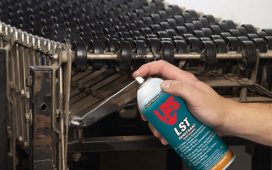1. Why EU MDR Compliance is Crucial for Medical Device Companies
Ensuring compliance with the European Union Medical Device Regulation (EU MDR) is of utmost importance for medical device companies operating within the European market. The EU MDR has introduced significant changes to the regulatory landscape, aiming to enhance patient safety and improve transparency in the medical device industry.
Understanding the Implications of EU MDR
The EU MDR replaces the previous Medical Device Directive (MDD) and imposes stricter requirements on medical device manufacturers, importers, distributors, and authorized representatives. It strengthens the evaluation and monitoring of medical devices throughout their lifecycle, from design and development to post-market surveillance.
One of the key implications of the EU MDR is the need for medical device companies to ensure the availability of comprehensive clinical data supporting the safety and performance of their devices. This requires conducting robust clinical studies and gathering sufficient evidence before placing devices on the market.
The Consequences of Non-Compliance
Non-compliance with the EU MDR can have serious consequences for medical device companies. Failure to meet the new regulatory requirements may result in significant financial penalties, product recalls, or even the withdrawal of devices from the market. This can not only lead to reputational damage but also impact patient safety and public trust in the industry.
It is important for medical device companies to understand the obligations imposed by the EU MDR and take proactive steps to meet the compliance requirements. By doing so, they can not only avoid potential penalties but also ensure the continued market access and competitiveness of their products.
The Benefits of Achieving EU MDR Compliance
While complying with the EU MDR may require significant investments of time, resources, and expertise, there are several benefits associated with achieving compliance. By adhering to the new regulations, medical device companies can:
- Enhance patient safety by ensuring the safety and performance of their devices.
- Improve transparency and credibility by providing comprehensive and accurate information to regulators, healthcare professionals, and patients.
- Gain a competitive advantage by demonstrating compliance and differentiating their products from non-compliant competitors.
- Enhance market access by fulfilling the requirements for placing devices on the European market.
- Build trust and confidence among healthcare professionals, patients, and regulators.
Overall, achieving EU MDR compliance is not only a regulatory requirement but also an opportunity for medical device companies to strengthen their operations, improve patient outcomes, and drive growth in the European market.
2. Key Changes and Requirements under EU MDR
The EU MDR introduces several key changes and requirements that medical device companies need to be aware of. These changes aim to enhance the safety, performance, and overall quality of medical devices available in the European market.
Overview of the New Medical Device Regulation
The EU MDR provides a comprehensive framework for the regulation of medical devices. It establishes more rigorous rules for the evaluation, clinical investigation, and post-market surveillance of medical devices. The regulation also introduces a new risk classification system for devices, requiring stricter controls for higher-risk devices.
Furthermore, the EU MDR includes provisions that aim to increase the transparency and traceability of medical devices by establishing a unique device identification (UDI) system. This system enables the effective identification, tracking, and monitoring of devices throughout their entire lifecycle.
Expanded Definition of Medical Devices
Under the EU MDR, the definition of medical devices has been expanded to include certain products that were previously not considered medical devices. This includes products intended for aesthetic or cosmetic purposes, such as dermal fillers and laser devices used for non-medical procedures.
With this expanded definition, manufacturers of these products will now need to comply with the EU MDR requirements, ensuring the safety and performance of such devices.
Stricter Clinical Evidence and Performance Requirements
The EU MDR places a greater emphasis on clinical evidence and performance requirements for medical devices. Manufacturers now need to provide comprehensive clinical data demonstrating the safety and performance of their devices based on clinical investigations.
Additionally, the EU MDR introduces stricter requirements for post-market surveillance and vigilance activities. Manufacturers need to establish robust systems for monitoring the performance of their devices, reporting adverse events, and taking appropriate corrective actions.
By imposing these stricter requirements, the EU MDR aims to enhance the reliability and quality of clinical evidence supporting the safety and effectiveness of medical devices, ultimately improving patient outcomes and safety.
3. Step-by-Step Guide to Achieving EU MDR Compliance
Achieving EU MDR compliance requires a systematic and comprehensive approach. Medical device companies can follow the step-by-step guide outlined below to ensure compliance with the regulatory requirements.
Assessing and Gap Analysis
The first step in achieving EU MDR compliance is to assess the current state of compliance within the organization. This involves conducting a thorough gap analysis to identify any areas where the company may fall short of the new requirements.
During the gap analysis, companies should evaluate their existing quality management systems, technical documentation, clinical evidence, labeling, and post-market surveillance processes. This assessment will help identify areas of non-compliance and define the necessary actions to achieve compliance.
Implementing an Effective Quality Management System
An effective quality management system (QMS) is essential for EU MDR compliance. Medical device companies should establish or update their QMS to meet the requirements outlined in the regulation.
The QMS should cover all aspects of the product lifecycle, including design and development, manufacturing, clinical investigations, post-market surveillance, and risk management. It should define clear processes, responsibilities, and controls to ensure the safety and performance of the devices.
Updating Technical Documentation and Labeling
Under the EU MDR, manufacturers need to update their technical documentation and labeling to meet the new requirements. The technical documentation should include comprehensive information on the design, intended use, performance, and safety of the device.
The labeling should provide clear and accurate information to healthcare professionals and patients, ensuring the safe and appropriate use of the device. The labeling should also comply with the new UDI system requirements, providing the necessary information for device identification and traceability.
By updating their technical documentation and labeling, medical device companies can ensure compliance with the EU MDR and provide the necessary information for regulatory authorities and end-users.
4. Best Practices for Successful EU MDR Compliance
Complying with the EU MDR can be a complex and challenging process. Medical device companies can adopt the following best practices to ensure successful compliance with the regulation.
Engaging with Notified Bodies
Notified Bodies play a crucial role in the EU MDR compliance process. Engaging with a reputable and accredited Notified Body can provide valuable guidance and support throughout the compliance journey.
Medical device companies should establish a strong relationship with their chosen Notified Body, collaborating closely to ensure a smooth compliance process. Regular communication and collaboration with the Notified Body can help address any concerns, clarify regulatory requirements, and ensure timely certification of devices.
Training and Education for Staff
Ensuring that staff members are well-trained and educated on the requirements of the EU MDR is vital for successful compliance. Medical device companies should invest in training programs and educational resources to build the necessary knowledge and skills within their organization.
Training should cover various aspects, including the new regulatory requirements, updated processes and procedures, risk management, and post-market surveillance. By equipping their staff with the necessary knowledge, companies can ensure consistent compliance and adherence to the highest quality standards.
Monitoring and Maintaining Ongoing Compliance
Compliance with the EU MDR is an ongoing process that requires continuous monitoring and maintenance. Medical device companies should establish robust systems for monitoring and reviewing their compliance status on a regular basis.
Periodic audits, reviews, and assessments should be conducted to identify any deviations from the regulatory requirements and implement corrective actions promptly. Ongoing compliance activities should also include post-market surveillance, monitoring of adverse events, and timely reporting of any safety-related concerns.
By adopting a proactive approach to compliance, medical device companies can ensure that their products meet the highest quality and safety standards, maintaining the trust of regulators, healthcare professionals, and patients.
Complying with the EU MDR is not only a regulatory obligation but also an opportunity for medical device companies to enhance patient safety, improve market access, and drive growth in the European market. By understanding the implications of EU MDR, implementing the necessary changes, and adopting best practices, companies can achieve and maintain compliance, ensuring the continued success and sustainability of their medical devices.
FAQ
Question: Why EU MDR Compliance is Crucial for Medical Device Companies?
Answer: Ensuring compliance with the European Union Medical Device Regulation (EU MDR) is of utmost importance for medical device companies operating within the European market. The EU MDR has introduced significant changes to the regulatory landscape, aiming to enhance patient safety and improve transparency in the medical device industry.
Question: What are the key changes and requirements under EU MDR?
Answer: The EU MDR introduces several key changes and requirements that medical device companies need to be aware of. These changes aim to enhance the safety, performance, and overall quality of medical devices available in the European market.
Question: What is the step-by-step guide to achieving EU MDR compliance?
Answer: Achieving EU MDR compliance requires a systematic and comprehensive approach. Medical device companies can follow the step-by-step guide outlined below to ensure compliance with the regulatory requirements.
Question: What are the best practices for successful EU MDR compliance?
Answer: Complying with the EU MDR can be a complex and challenging process. Medical device companies can adopt the following best practices to ensure successful compliance with the regulation.
Question: How can medical device companies engage with Notified Bodies?
Answer: Notified Bodies play a crucial role in the EU MDR compliance process. Engaging with a reputable and accredited Notified Body can provide valuable guidance and support throughout the compliance journey.
Question: Why is training and education for staff important for EU MDR compliance?
Answer: Ensuring that staff members are well-trained and educated on the requirements of the EU MDR is vital for successful compliance. Medical device companies should invest in training programs and educational resources to build the necessary knowledge and skills within their organization.
Question: How can medical device companies monitor and maintain ongoing compliance with EU MDR?
Answer: Compliance with the EU MDR is an ongoing process that requires continuous monitoring and maintenance. Medical device companies should establish robust systems for monitoring and reviewing their compliance status on a regular basis.
Question: What are the benefits of achieving EU MDR compliance?
Answer: While complying with the EU MDR may require significant investments of time, resources, and expertise, there are several benefits associated with achieving compliance. By adhering to the new regulations, medical device companies can enhance patient safety, improve transparency and credibility, gain a competitive advantage, enhance market access, and build trust and confidence among healthcare professionals, patients, and regulators.
Useful Resources:
- https://www.emergobyul.com/ – Information and consulting services on EU MDR compliance for medical device companies.
- https://www.medtecheurope.org/ – Industry association representing the medical technology sector in Europe, provides resources on EU MDR compliance.
- https://ec.europa.eu/growth/sectors/medical-devices_en – Official European Commission website with information on EU MDR and related regulations.
- https://www.ispor.org/ – International Society for Pharmacoeconomics and Outcomes Research provides resources on health economics and outcomes research for medical device companies.
- https://www.ncbi.nlm.nih.gov/ – National Center for Biotechnology Information, provides access to scientific literature and research articles related to medical devices and EU MDR compliance.
- https://www.enfsi.eu/ – European Network of Forensic Science Institutes, provides resources on forensic aspects of EU MDR compliance.
- https://www.iso.org/ – International Organization for Standardization, provides standards and guidelines related to quality management systems for medical device companies.
- https://www.who.int/ – World Health Organization, provides global guidelines on medical devices and regulatory harmonization.







